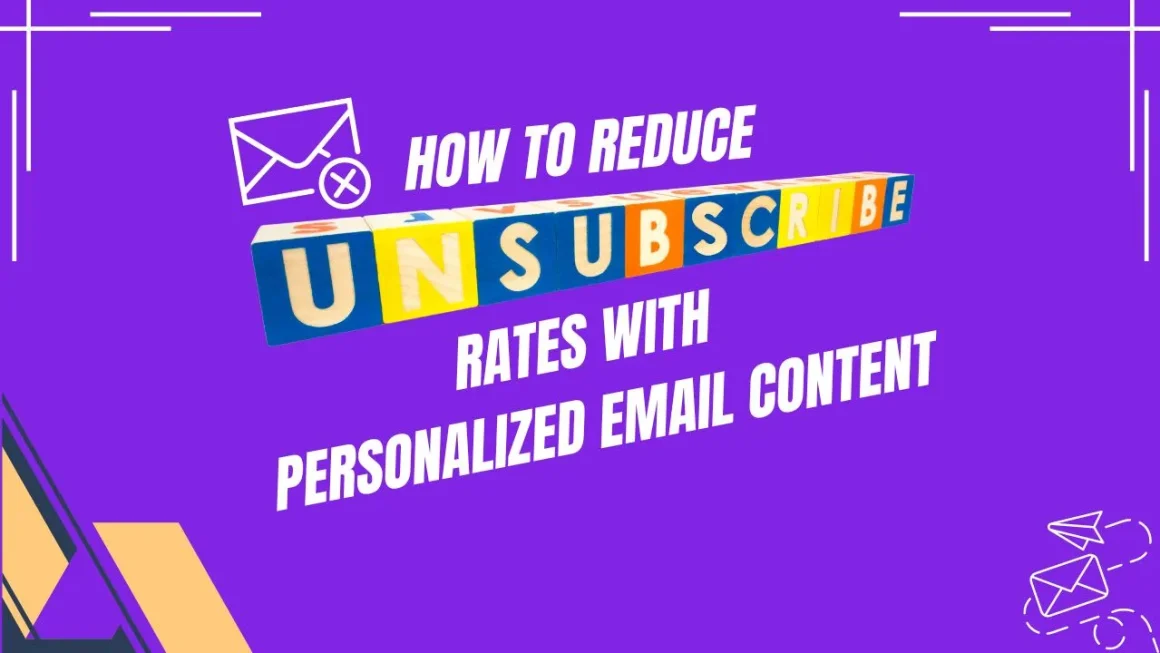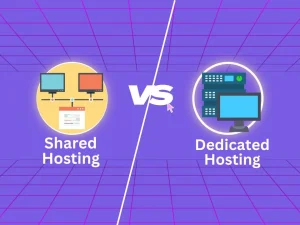To reduce unsubscribe rates, use personalized email content that caters to individual preferences and interests. Tailor messages based on user data and behavior.
Personalized email content significantly boosts engagement and retention. By understanding your audience’s preferences, you can create relevant and compelling messages. Use data such as past purchase history, browsing behavior, and demographics to customize your emails. Segment your audience to target specific groups with tailored content.
Personalization makes subscribers feel valued and understood, reducing the likelihood of them opting out. Consistent and meaningful interactions build trust and loyalty. Implementing personalized strategies helps maintain a strong subscriber base and enhances overall email marketing effectiveness.

Credit: fastercapital.com
Importance Of Personalization
Personalization is key to reducing unsubscribe rates. It makes emails relevant to readers. Personal emails show you care about each subscriber. This connection can keep your audience engaged.
Boosting Engagement
Personalized emails can boost engagement. They grab attention with tailored content. Use the subscriber’s name in the subject line. This simple touch can increase open rates.
Segment your email list. Group subscribers by interests or past behavior. Send targeted content to these groups. This approach ensures each email is relevant.
Here are some personalization tips:
- Use the subscriber’s first name.
- Send content based on past purchases.
- Offer special deals on their birthday.
Building Trust
Personalized emails help build trust. Subscribers feel valued and understood. Trust can lead to long-term relationships.
Consistency is important. Send emails regularly but not too often. Respect the subscriber’s time.
Consider these trust-building strategies:
- Provide valuable content.
- Use a friendly and professional tone.
- Be transparent about your intentions.
Personalization shows you care about your audience. It can reduce unsubscribe rates and increase loyalty.
Understanding Your Audience
To reduce unsubscribe rates, it’s crucial to understand your audience. Knowing their preferences helps tailor personalized email content. This leads to better engagement and fewer unsubscribes.
Segmenting Subscribers
Segmenting subscribers into different groups improves email relevance. Create segments based on demographics, behavior, and interests. This ensures each subscriber gets content they care about.
- Demographics: Age, gender, location.
- Behavior: Purchase history, website activity.
- Interests: Product preferences, content engagement.
Analyzing Preferences
Analyzing subscriber preferences is key to personalized content. Use data from past interactions and surveys to understand what they like. Tailor your emails to match their interests.
| Data Source | Insights |
|---|---|
| Past Purchases | Identify popular products |
| Email Engagement | Understand content preferences |
| Surveys | Gather direct feedback |
Crafting Personalized Content
Personalized email content can reduce unsubscribe rates significantly. It makes your emails relevant and engaging. This section will explore how to create personalized content for your email campaigns.
Dynamic Content Blocks
Dynamic content blocks let you tailor specific parts of your email. These blocks can change based on the recipient’s preferences or behavior. For example, you can show different products to different users. This ensures each recipient sees content that interests them.
Here’s how dynamic content blocks work:
- Identify segments in your audience.
- Use data to understand their interests.
- Create different content blocks for each segment.
- Insert these blocks into your email template.
Using dynamic content blocks makes your emails more relevant. This reduces the chances of users unsubscribing.
Personalized Subject Lines
Subject lines are the first thing recipients see. Personalized subject lines grab attention and increase open rates. They show the email is relevant to the recipient.
Consider these tips for crafting personalized subject lines:
- Use the recipient’s name.
- Include their recent activity or purchase.
- Mention a topic they showed interest in.
Examples of effective personalized subject lines:
| Generic Subject Line | Personalized Subject Line |
|---|---|
| Check out our new products | John, new arrivals just for you! |
| Don’t miss our sale | Jane, your favorite items are on sale! |
Personalized subject lines make your emails stand out. This increases the likelihood of engagement and reduces unsubscribe rates.
Using Behavioral Data
Reducing unsubscribe rates can be challenging. But, personalized email content can help. One effective way to do this is by using behavioral data. This data helps you understand your audience better. You can track their actions and tailor your messages. This approach makes your emails more relevant and engaging.
Tracking Email Interactions
Tracking email interactions is essential. It helps you know what your subscribers like. You can see who opens your emails. You can see who clicks on links. This information is valuable. You can use it to improve your content.
| Interaction | Data Collected |
|---|---|
| Email Opens | Time, Date, Device |
| Link Clicks | Link, Frequency, Interest |
| Unsubscribes | Reason, Timing |
Tailoring Follow-up Emails
Tailoring follow-up emails increases engagement. Use the data you collected. Segment your audience based on their behavior. Send personalized follow-up emails.
Here are some tips:
- Send special offers to frequent clickers.
- Send reminders to those who open but don’t click.
- Send re-engagement emails to inactive subscribers.
Personalized emails make your subscribers feel valued. This helps reduce unsubscribe rates.
A/b Testing Strategies
Reducing unsubscribe rates is crucial for email marketing success. A/B testing helps find the best strategies. This method compares two versions of an email. It identifies which one performs better. Let’s explore how to use A/B testing effectively.
Experimenting With Content
Start by experimenting with different email content. Test subject lines, email body, and call-to-action (CTA) buttons. Create two versions (A and B) with slight variations. For example, try a personalized subject line in one version. Use a general subject line in the other.
- Subject Lines: Test personalized vs. generic.
- Email Body: Compare long vs. short content.
- CTA Buttons: Test different colors and text.
Track which version receives more opens and clicks. This data will guide future email content.
Measuring Success
Measuring the success of A/B tests is essential. Use key metrics to evaluate performance.
| Metric | Description |
|---|---|
| Open Rate | Percentage of recipients who open the email. |
| Click-Through Rate (CTR) | Percentage of recipients who click on links. |
| Conversion Rate | Percentage of recipients who complete a desired action. |
| Unsubscribe Rate | Percentage of recipients who unsubscribe from the list. |
Analyze these metrics after every A/B test. Identify the winning version. Use the insights to optimize future emails. This ensures content resonates with your audience.
Implementing Automation
Implementing Automation in email marketing can significantly reduce unsubscribe rates. By automating personalized content, you keep your audience engaged. This section explores how to utilize automated campaigns effectively.
Triggered Campaigns
Triggered Campaigns are emails sent based on user actions. These actions can be purchases, website visits, or form submissions. Triggered emails are timely and relevant, increasing engagement.
- Welcome emails after sign-up.
- Abandoned cart reminders.
- Purchase confirmations.
Make sure your triggered campaigns provide value. Include personalized messages to make users feel special. This will reduce unsubscribe rates.
Personalized Drip Campaigns
Personalized Drip Campaigns send a series of emails over time. These emails are tailored to user behavior. Drip campaigns nurture leads and build relationships.
- Segment your audience based on interests.
- Craft relevant content for each segment.
- Schedule emails at optimal times.
Use user data to personalize each email. Include their name, past purchases, or browsing history. This makes your emails more engaging and reduces unsubscribes.
Implementing automation in your email marketing strategy can greatly reduce unsubscribe rates. Use triggered and personalized drip campaigns to keep your audience engaged.
Feedback And Surveys
Creating personalized email content can significantly reduce unsubscribe rates. Feedback and surveys play a crucial role in this process. They help gather insights about your audience’s preferences. This section focuses on how to use feedback and surveys effectively.
Gathering Insights
To create effective content, gather insights from your subscribers. Use simple and engaging surveys. Ask questions about their interests and preferences. Here’s how to do it:
- Use short, clear questions.
- Offer multiple-choice options.
- Keep the survey brief.
- Use engaging visuals.
Analyze the survey results to understand your audience better. Look for common themes and preferences. This data will guide your content creation.
Adjusting Content Strategies
Based on feedback, adjust your content strategies. Personalize your emails to match subscriber interests. Use the data collected to segment your audience. Here are some tips:
- Create content that matches their interests.
- Use personalized subject lines.
- Send targeted emails based on behavior.
- Regularly update your content strategy.
Table of common feedback and content adjustments:
| Feedback | Content Adjustment |
|---|---|
| Interested in travel tips | Send travel guides and tips |
| Prefers video content | Include more video links |
| Wants more discounts | Offer exclusive discounts |
Regularly review and update your strategies. Keep your content fresh and relevant. This approach ensures that your subscribers stay engaged and happy.
Analyzing Unsubscribe Data
Reducing unsubscribe rates is crucial for email marketing success. One effective way is by analyzing unsubscribe data. This helps identify why subscribers are leaving. Understanding these reasons allows for better email content strategies. Let’s dive into how to analyze unsubscribe data effectively.
Identifying Patterns
To identify patterns, start by collecting unsubscribe data. Use email marketing tools to track unsubscribes. Look for common reasons given by users. Create a table to organize this information.
| Reason | Number of Unsubscribes |
|---|---|
| Content Not Relevant | 50 |
| Too Many Emails | 30 |
| Other | 20 |
Patterns will emerge from this data. For example, if many users find the content irrelevant, it signals a need for more personalized content.
Taking Corrective Actions
Once you identify patterns, it’s time to take corrective actions. Here are some steps:
- Segment Your Audience: Divide your audience based on interests. Send targeted content to each segment.
- Personalize Emails: Use the subscriber’s name. Mention their past interactions.
- Optimize Frequency: Reduce the number of emails sent. Ensure each email adds value.
- Ask for Feedback: Encourage subscribers to share why they unsubscribe. Use this feedback to improve.
By taking these actions, you can reduce unsubscribe rates significantly. Personalized email content keeps subscribers engaged.
Credit: smartmail.io
Frequently Asked Questions
How To Lower Email Unsubscribe Rate?
Segment your email list for targeted content. Personalize emails to increase relevance. Keep emails concise and valuable. Optimize email frequency to avoid overwhelming subscribers. Offer an easy opt-down option.
What Is An Acceptable Email Unsubscribe Rate?
An acceptable email unsubscribe rate is typically below 0. 5%. Rates above 1% may indicate content or targeting issues.
How Do I Unsubscribe From Emails Efficiently?
Click the “unsubscribe” link at the bottom of the email. Follow the instructions provided. Check your spam folder for missed emails. Adjust email preferences in your account settings. Use an email management tool for efficiency.
How Do You Calculate Email Unsubscribe Rate?
Calculate email unsubscribe rate by dividing the number of unsubscribes by the number of delivered emails. Multiply by 100.
Conclusion
Crafting personalized email content can significantly reduce unsubscribe rates. Focus on audience segmentation and tailored messaging. Use engaging subject lines and relevant content. Monitor feedback and adjust strategies accordingly. With these steps, you can build stronger connections and maintain a loyal subscriber base.
Personalization is key to email marketing success.











